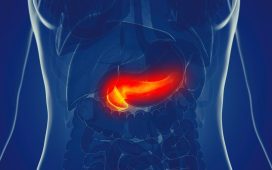Perceived chronic traumatic encephalopathy doubles risk for suicidality
By Lori Solomon HealthDay Reporter
MONDAY, Sept. 23, 2024 (HealthDay News) — More than one-third of living former professional American-style football (ASF) players report perceived chronic traumatic encephalopathy (CTE), which is associated with an increased prevalence of self-reported suicidality, according to a study published online Sept. 23 in JAMA Neurology.
Rachel Grashow, Ph.D., from Harvard University in Boston, and colleagues sought to determine the proportion, clinical correlates, and suicidality of living former professional ASF players with perceived CTE. The analysis included data from 1,980 former professional ASF players (1960 to 2020) participating in the Football Players Health Study at Harvard University (2017 to 2020).
The researchers found that 34.4 percent of participants reported perceived CTE. Factors significantly associated with perceived CTE included subjective cognitive difficulties, low testosterone level, headache, concussion signs and symptoms accrued during playing years, depressive/emotional and behavioral dyscontrol symptoms, pain, and younger age. Suicidality was reported by 25.4 percent of participants with perceived CTE and 5.0 percent of those without perceived CTE. Participants with perceived CTE remained twice as likely to report suicidality (odds ratio, 2.06), even when adjusting for established suicidality predictors (e.g., depression).
“Perceived CTE represents a novel risk factor for suicidality and, if present, should motivate the diagnostic assessment and treatment of medical and behavioral conditions that may be misattributed to CTE neuropathological change,” the authors write.
Several authors disclosed ties to the neurodiagnostics industry.
Editorial (subscription or payment may be required)
Copyright © 2024 HealthDay. All rights reserved.








